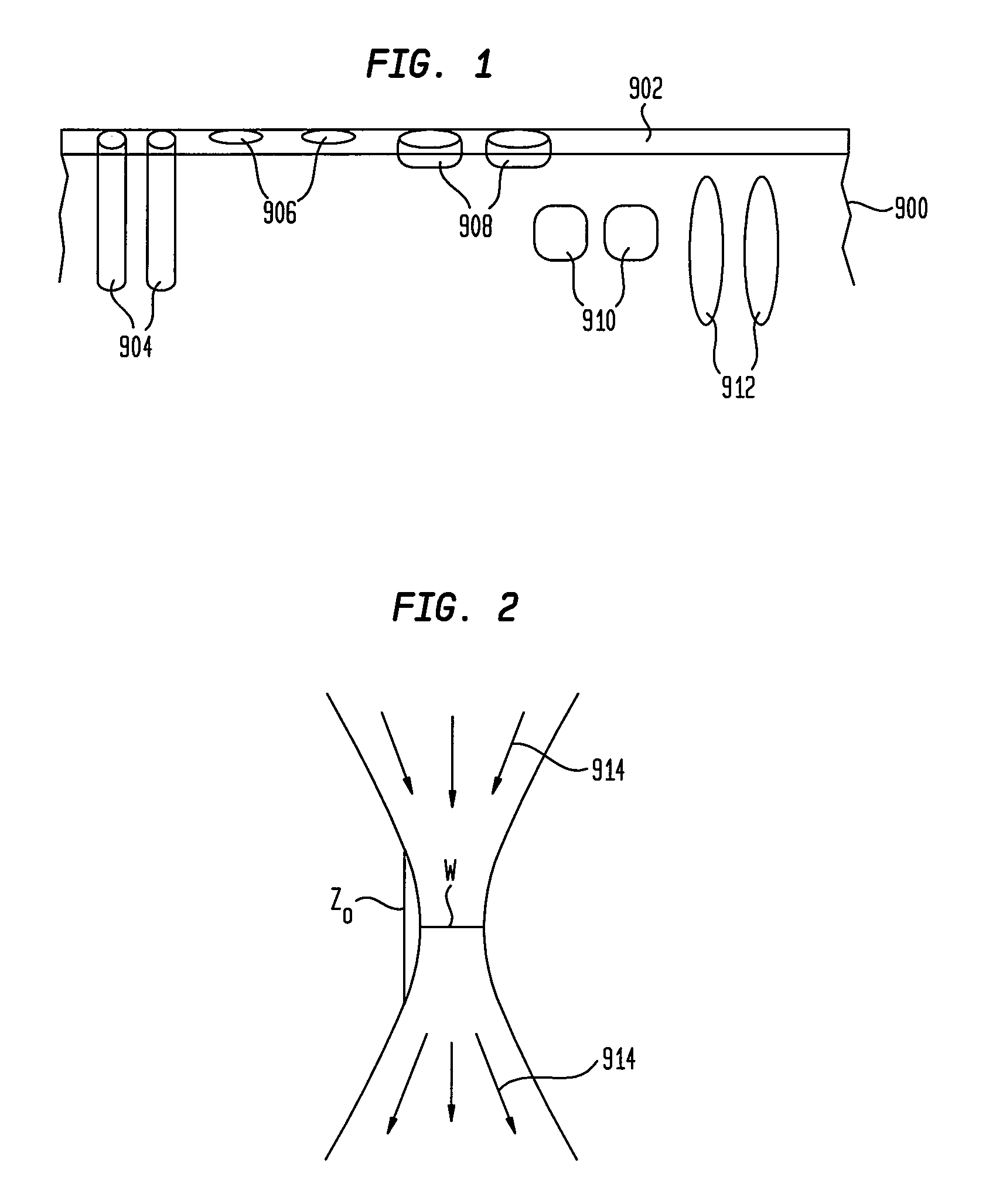Methods And Devices For Fractional Ablation Of Tissue
a fractional ablation and tissue technology, applied in the field of tissue ablation with electromagnetic energy, can solve the problem of insufficient tissue damage, and achieve the effect of facilitating the transmission of electromagnetic radiation and altering an optical property of the skin
- Summary
- Abstract
- Description
- Claims
- Application Information
AI Technical Summary
Benefits of technology
Problems solved by technology
Method used
Image
Examples
second embodiment
[0218]FIG. 21 depicts a hand piece 450 that uses a mirror in order to reflect portions of EMR, while allowing certain patterns of the EMR to pass through holes in order to create islets of treatment. The embodiment of FIG. 21 includes a light source 452 and, in some embodiments, beam-shaping optics 454 and a waveguide 456. These components can be in a hand piece 450, such as those hand pieces set forth above. In other embodiments, the light source 452 can be in a base unit outside of the hand piece 450. The light source 452 can be a laser, a flashlamp, a halogen lamp, an LED, or another coherent or thermal source. In short, the light source 452 can be any type of EMR source as set forth above. The beam-shaping optics 454 can be reflective or refractive and can serve to direct EMR downward toward the output of the hand piece. The beam-shaping optics 454 can generally be disposed above and to the sides of the light source 452. The waveguide 456 can be used, for example, for homogeniza...
experiment 2
[0435]b. Treatment of Wet Paper
[0436]A sheet of paper was wetted and trapped between two glass slides. The slides were oriented parallel to beam trajectory in the same plane. The distance between the paper and device was 1-3 mm. The paper was irradiated with EMR having a wavelength of 2940 nm, at 18-20 mj per beam and a pulse width of 200 microseconds. As it is shown in FIG. 56, the approximate depth of the resulting columns / islets was 350-400 micrometers, while the diameters of the resulting micro-holes were approximately 50-70 micrometers.
experiment 3
[0437]c. Treatment of Slice of ex vivo Pig Skin
[0438]A thin slice of fresh pig skin was trapped between two glass slides and treated similarly to the wet paper described in Experiment 2, using the same treatment parameters. As it is shown in FIG. 57, the depth of the resulting micro-holes was approximately 350-400 micrometers and the diameter of the micro-holes was approximately 50-75 micrometers.
[0439]d. Experiment 4—Traverse Micro-Holes in the Human Nail in vivo.
[0440]EMR-treated islets were created generally perpendicular to the surface of a human finger nail. The parameters employed in this experiment were the same as those described in Experiments 2 and 3. However, in this case, the laser was fired twice, while it was fired once in Experiments 2 and 3. As a result of the treatment, the subject had a tingling sensation after the second firing but did not experience pain from the treatment. A burning sensation was felt after applying a 10% ammonia solution, which was very similar...
PUM
 Login to View More
Login to View More Abstract
Description
Claims
Application Information
 Login to View More
Login to View More - R&D
- Intellectual Property
- Life Sciences
- Materials
- Tech Scout
- Unparalleled Data Quality
- Higher Quality Content
- 60% Fewer Hallucinations
Browse by: Latest US Patents, China's latest patents, Technical Efficacy Thesaurus, Application Domain, Technology Topic, Popular Technical Reports.
© 2025 PatSnap. All rights reserved.Legal|Privacy policy|Modern Slavery Act Transparency Statement|Sitemap|About US| Contact US: help@patsnap.com



